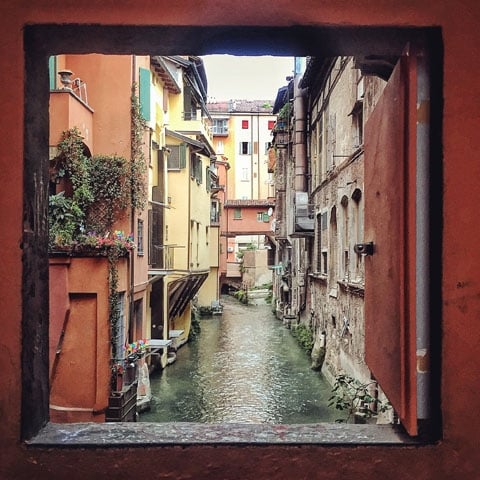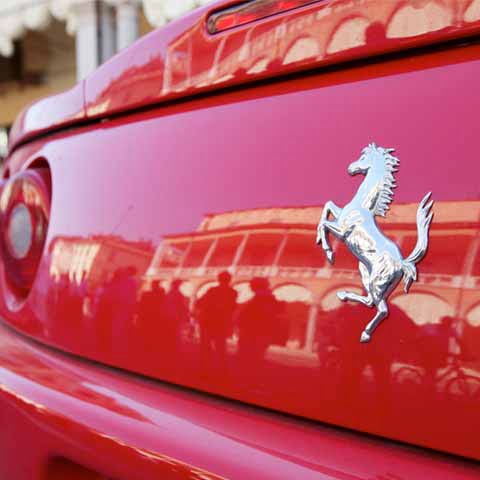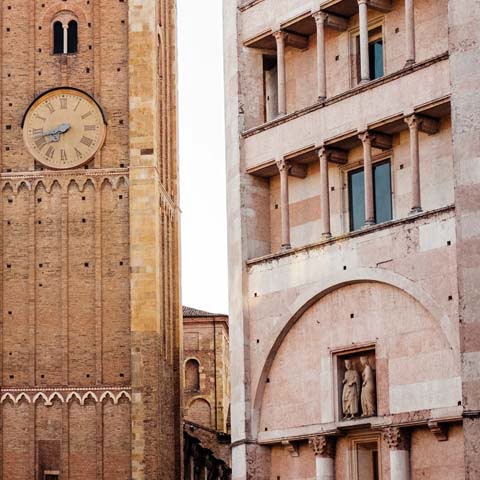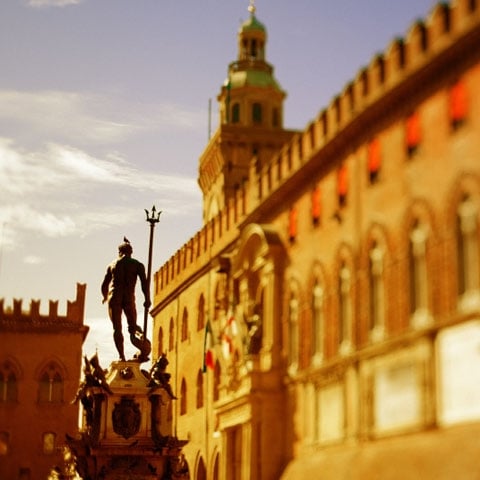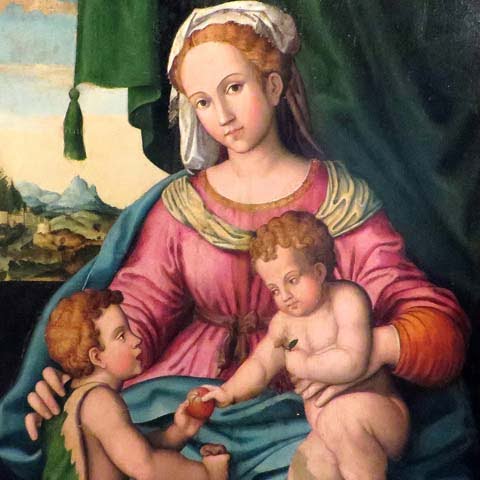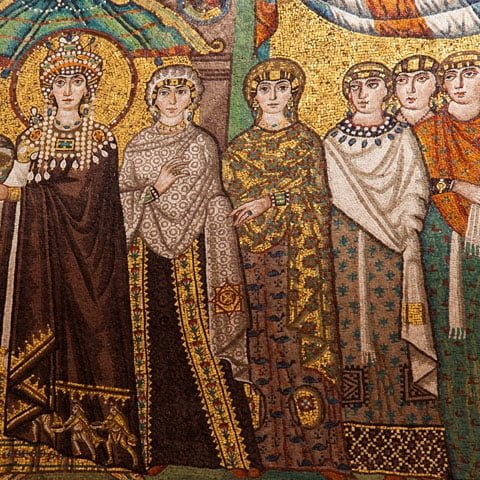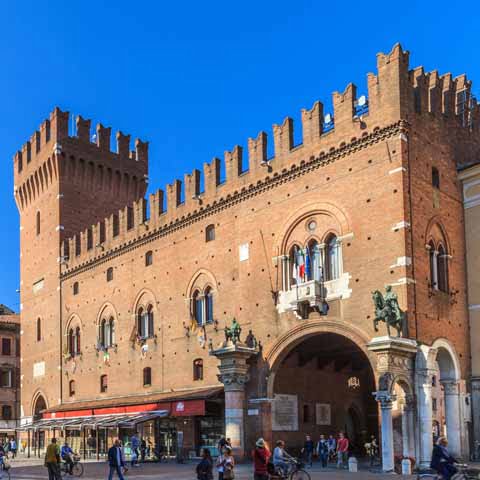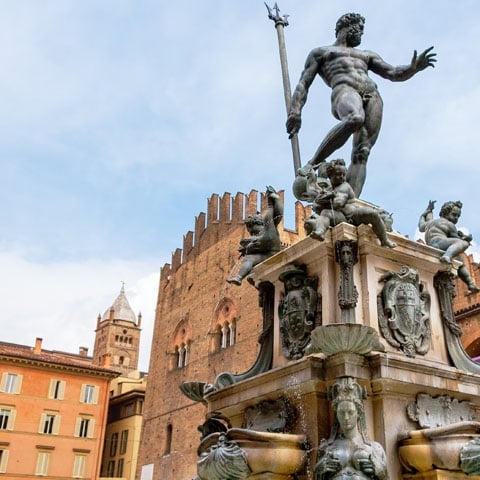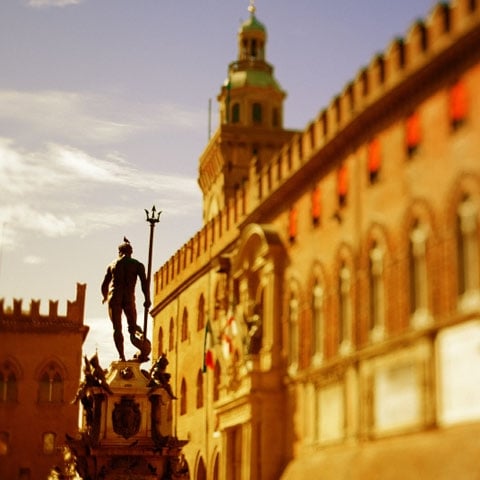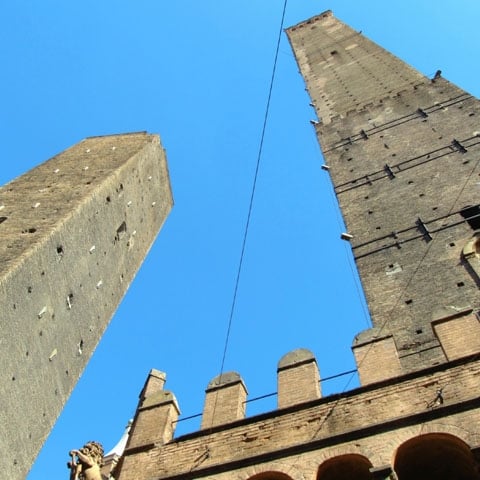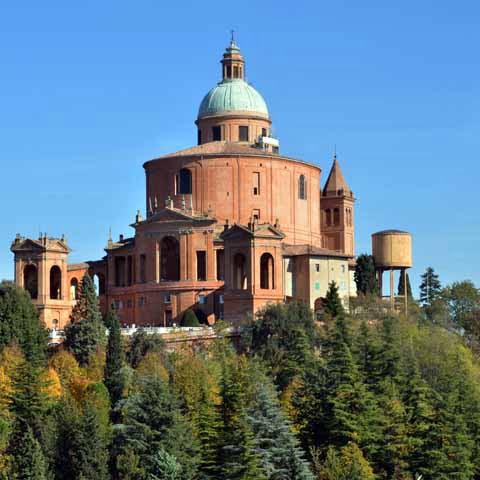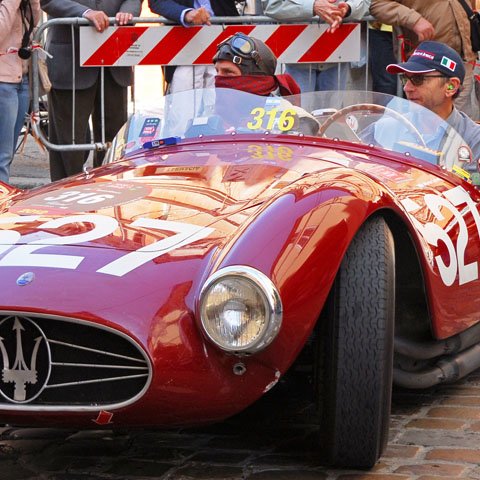Emilia Romagna is a region characterized by different facets, by a cultural diversity that is given by both the geographical position and the two territorial entities that make up the region as a whole, Emilia and Romagna.
Moreover, the culture of the region is the expression of the vast ancient traditions on the one hand, and the lively and thoughtful lifestyle characteristic to Riviera Romagnola on the other hand.
The culture of the region has its roots in the birth of the world’s first university, in Bologna in 1088. This explains why so many scientists and literates are linked to the Emilia Romagna region. But Emilia Romagna also has a strong musical tradition, whether we speak about opera music, jazz, or a variety of other styles.
Apart from the scientific and musical considerations, Emilia Romagna is also characterized by strong historical and artistic assets. In the region, there are three UNESCO World Heritage sites, the historic center of Ferrara, Piazza Grande in Modena, and the early Christian monuments in Ravenna.
As such, the region offers a vast cultural diversity that is able to please even the most demanding people.
The artistic and architectural development of Emilia Romagna begins in Ravenna in 402 AD, when the capital of the Western Roman Empire was transferred here from Milan. The period coincides with a boom in the artistic flowering of the city, and consequently of the region.
Testimonies of the ancient flowering of the city, and of the region as a whole, are the early Christian churches and baptisteries that withstood the test of time, such as the baptistery of an Orthodox church or the Mausoleum of Galla Placidia.
However, the real golden period regarding the art and architecture in the region is attributed to the Byzantine and Gothic periods. Two representative examples of architecture are the basilicas of San Vitale and Sant’Apollinare, two churches originally decorated with outstanding mosaics. In fact, the Byzantine art of Ravenna became so famous that it started to influence the architecture of the nearby areas along the coasts of the Adriatic up to the Republic of Venice.
With an artistic style that always set it apart from the other regions of Italy, Emilia Romagna also developed a distinctive architectural style during the Romanesque period that led to the construction of the beautiful cathedrals of Modena and Ferrara. Apart from that, in the same period, in the areas of Parma and Piacenza, the architects and artists began to merge the Emilian style with Lombard elements, creating a unique type of architecture.
But the Romanesque period was not only prolific from an architectural point of view. In fact, the Emilian arts school dictated styles and influences even in sculpture. Merging the local style with some Burgundian influences, a group of anonymous artists created a series of impressive sculptures and artworks that can still be admired today.
From that moment until the second quarter of the 12th century, Emilia Romagna’s art didn’t change much. Nevertheless, in the 12th century, the artistic influences of the region began to find inspiration in the Provencal classicism and French gothic styles.
This new type of sculptural language diffused from Emilia Romagna, and it has dominated the central Italy until the 13th century when some of the most interesting Italian gothic buildings arose.
By that time, Ravenna lost its privileged status to Bologna. The Gothic architecture in Bologna is characterized by an extremely picturesque style that can still be admired today in a few edifices, such as the church of San Petronio or the palace of Mercanzia.
The Byzantine influence prevailed in painting beginning with the 13th century. Some wonderful mosaics of the era are still present on the walls and floors of the baptistery of Parma, while in the 14th century Giotto and the Sienese school gave life to numerous local art schools in Rimini, Bologna, and Modena, where the late-gothic style was developed.
The Emilian sculpture, on the other hand, didn’t enjoy a flowering period but inspired itself and adopted some influences from the Lombard, Venetian, and Tuscan art.
Ferrara is considered the city of the Renaissance in Emilia Romagna. In fact, during the Renaissance, Ferrara met a period of artistic flowering, especially in painting. This artistic flowering is majorly attributed to the Este family who invested in and formed a series of talented artists such as Piero della Francesca, Jacopo Bellini, and above all Andrea Mantegna.
During that period, Ferrara became one of the largest pictorial centers of Italy, but it all ended towards the late 15thcentury when the art school of Ferrara decided to move to Bologna. During the 15th and 16th centuries, Bologna developed a new school inspired by the Umbrian-Venetian idealism, this style influencing the rest of the region.
A peculiarity of Ravenna’s art is the fact that the paintings, the vast majority created on mosaics, developed around the architecture which surrounds them. This current is very relevant to the art history of the region and the style is defined as a single architectural and artistic movement.
The first half of the 16th century was characterized by the appearance of Mannerism between Parma and Bologna, a movement that faded away quickly to give space to the foundation of the Accademia degli Incamminati, represented by artists such as Ludovico Carracci or Agostino Carracci, two painters who started to lay the foundations of the Baroque painting style.
From this moment on, the artistic influences of Emilia Romagna start to merge with Bologna’s school, whose exponents were among the protagonists of the 17th-century classicism.
An important artist of the century is Giuseppe Maria Crespi, an authentic anti-academic painter who inspired himself from the real life and represented it in its concreteness. Although today considered a genius of his time, the art of Crespi wasn’t much appreciated at that time. In fact, this style is rich in mythology, history and symbols, and that is so different from both the classicism and the decorative virtuosity of the ornate painters, and was approached with diffidence.
The artistic movement in the region changed once more in the 18th century, when the landscaping art became a specialty in Bologna. This movement led to the rise of a number of prospective-illusionistic representations of the architectural elements, among other artistic movements.
A true innovation in architecture is brought by the Galli family, also called Bibiena, a family of architects who contributed to a series of architectural interventions throughout the region.
The main architectural innovation was brought to the theaters. In fact, Bibiena abandoned the “infinite” perspective of the court theater aiming to improve the dynamics of the scene. This system of the theater was copied by many other architects, a few splendid examples of the movement being the theaters of Forli, Ferrara, Faenza, and Mirandola, among others.
In the 17th century, Modena also met a period of great splendor thanks to a few prestigious architects influenced by the Romanesque style. Among them, we can name Gian Lorenzo Bernini, Francesco Borromini, and Guarino Guarini, all of them linked to the architectural vicissitudes of the Ducal Palace in Modena.
In about the same period in Modena emerged other impressive edifices, today protected by the patronage of UNESCO. These edifices are the Dome of Modena and the Ghirlandina Tower, two religious architectural elements that blend perfectly in the medieval environment of the city. The edifices are located in Piazza Grande, also included on the UNESCO list.
By the middle of the 18th century, the region underwent French artistic influence, especially in Parma that is considered the center of neoclassicism. Palazzo Milzetti in Faenza is a representative example of the style, boasting a unique cycle of decorations.
The 19th century can be considered the century of the great urban and architectural revolutions due to the demographic growth and the gradual change of the agrarian economy into an industrial one. Fortunately, the new additions didn’t modify the existing structures, yet the new edifices developed around the ancient structures, such as in the case of Bologna.
The architectural style of that period is characterized by neo-gothic influences, while many of the existing edifices have been brought to their original Romanesque-Gothic aspect.
Ferrara becomes the center of the artistic movement again in the 20th century thanks to Giorgio de Chirico, the creator of the metaphysical painting. Apart from him, other important contemporary painters were Filippo de Pisis, who reinterpreted the light of Impressionism, and Giorgio Morandi, a painter more connected to the rediscovery of form, and faithful interpreter of the classic Italian figurative tradition.
During the last century, the architectural movement of Emilia Romagna focused more on recovery and conservation than on new innovations. Nevertheless, some representative edifices of the period include the Congress Palace in Bologna, and “Luigi Zoja” Thermal Baths in Salsomaggiore.
In Emilia Romagna, science influenced both the art and culture, but also the people and the local traditions. The region is a pioneer, taking education to the next level for the first time in the world. And in a region that boasts the oldest university in the world, one can only expect to hear about great personalities.
One of them is Guglielmo Marconi, an Italian physician and Nobel Prize winner who changed the global understanding of electromagnetic waves.
Marconi was born in 1874 in Bologna and grew up in Pontecchio, where he developed his first scientific curiosity and created the basis of his greatest invention, the radio. In fact, the scientist launches the first wireless telegraph signal in 1895 from Villa Griffone, his residence at the time.
From that moment on, Marconi dedicated his life to the development and improvement of radio communications. A milestone in the artist’s work is represented by the transmission of the first SOS signal through the Atlantic in December 1901, an invention that about 11 years later managed to save the 706 survivors of the Titanic disaster.
The scientist gained a lot of attention and a few important titles, yet he didn’t stop. In 1914, Marconi developed the first radiotelephone device and began to study the short-wave beam system, while sixteen years later he used the basis of the invention for the radar.
Today, Villa Griffone houses a museum dedicated to the scientist.
But Marconi is not the only scientist to have made history in Emilia Romagna. Another famous scientist and discoverer of the biological electricity, Luigi Galvani, is another Emilian scientist who revolutionized the world.
Galvani was born in Bologna in 1737 and graduated from the School of Medicine of the University of Bologna in 1759. After graduation, Galvani joined the Academy of Sciences and in only seven years was appointed the president of the Academy.
Galvani covered many prestigious assignments at the university but also continued his research work at home, where he set up a laboratory. In 1791, he published the first study that illustrated his theory related to animal electricity.
Today, Galvani is remembered for the invention of the galvanometer, electrochemical cells, and galvanization.
Galvani doesn’t have a museum dedicated to him; nonetheless, if you are interested in science, there are other interesting science-related museums to visit in the region.
Among them, we can mention Specola Musem in Bologna, a museum dedicated to astronomy that hosts many interesting artifacts. Apart from a tour of the University of Bologna, the Museum of the History of Psychiatry in Reggio Emilia and the Giovanni Capellini Geologic Museum in Bologna are two other science museums in the region.
Emilia Romagna is a region renowned not only for science, but also for its literature. There are a few writers who really made a difference in the region, and a journey to the places that inspired famous writers and poets throughout the centuries represents an alternative way of visiting the region.
Ferrara is linked to Ludovico Ariosto, one of the most representative names in the local literature and author of the popular poem Orlando Furioso. The residences where the writer spent a great part of his childhood and adult life withstood the test of time and today, some of them are transformed into museums dedicated to the poet.
Among the edifices linked to the writer’s life, there is Magna Domus, the house where Ariosto grew up. Another important architectural piece linked to the life of the artist is a house on Contrada del Mirasole, where he lived with his son when he came back to Ferrara.
Leon Battista Alberti is often remembered as an architect and philosopher, yet this multi-talented man was also a refined humanist and writer. To discover more about him and about the places he was linked to, head to Rimini to discover a city of the 15th century.
Giosuè Carducci is another important writer, although he was from Tuscany, he spent the second part of his life in Emilia Romagna, and the places linked to his life await in Bologna.
One of the most emotional and representative places to see is the house museum of Giosuè Carducci, a literary place that still maintains the original aspect of the nineteenth century and that allows visitors to travel back in time and discover how the house was when Carducci was living in it.
For a more intimate approach to Carducci’s life, read the poem Pianto Antico then visit the garden of the house in which Carducci lived between 1861 and 1879 to discover the pomegranate tree cited by the author in the poem.
Giovanni Pascoli is one of the most influential poets of the twentieth century in Italy, and his works were inspired by Emilia Romagna.
The region repaid his love for the territory by naming a small commune in Forli-Cesena in honor of the writer. In this small commune, named San Mauro Pascoli, is located Casa Pascoli, the residence where the poet was born in 1855.
Today, the house hosts a museum complete with a few original furnishings and numerous objects that belonged to the writer, including an imposing photographic patrimony that illustrates the life of Pascoli.
The Emilia Romagna region is also characterized by a very strong musical tradition that counts numerous artists and composers, not to mention the various styles.
Among all musical styles, the one truly characteristic to the region is opera. Probably the most important name linked to the opera Giuseppe Verdi, a renowned composer whose operas are still played in many theaters around the world.
Among the many operas of the artist, we can mention the most famous, namely Rigoletto, Traviata, and Aida.
Apart from the Italian composer, many other classical artists have chosen the region to spend a part of their life. Among them, there are Rossini, Liszt, Donizetti, and Mozart.
Another name linked to both the opera and the region, this time a singer, is Luciano Pavarotti. Born in Modena, Pavarotti conquered the whole world with his unique voice, and he is probably the most famous tenor of the 20thcentury. But even if he amazed the world with his outstanding performances, the artist never forgot his origins.
In fact, Pavarotti has always had charming words for his home city, encouraging visitors to plan a trip to the region.
Arturo Toscanini, one of the greatest orchestra conductors of all times was also from Emilia Romagna, more precisely from Parma.
Bologna, on the other hand, is not only famous for its university and for the exquisite food. The region is also considered one of the most musically creative cities in Italy.
From 1950 onwards, the city hosts an important International Jazz Festival each year, while some of the most beloved contemporary Italian songwriters, Francesco Guccini and Lucio Dalla, were born in the region.
The region is also the native land of two other famous singers and songwriters, Laura Pausini and Zucchero Fornaciari. Both artists are still active and their music is appreciated all over the world.
The landscapes and the territory of Emilia Romagna also inspired many directors and screenwriters over the years, but it also offered the world a few of the most valuable personalities in the movies and cinema field.
Among them, the most famous is probably Federico Fellini, director of La Dolce Vita.
Marco Bellocchio distinguishes himself with I Pugni In Tasca, a movie that represents a tough attack to the burgees-catholic family values. Another important movie of the director is Nel Nome del Padre.
Lastly, Pupi Avati is one of the directors that transformed the Italian comedy by producing a series of comical movies that are still loved even by the youngest generations.
